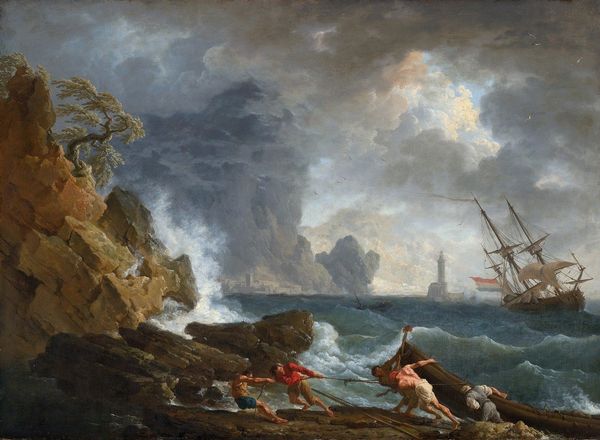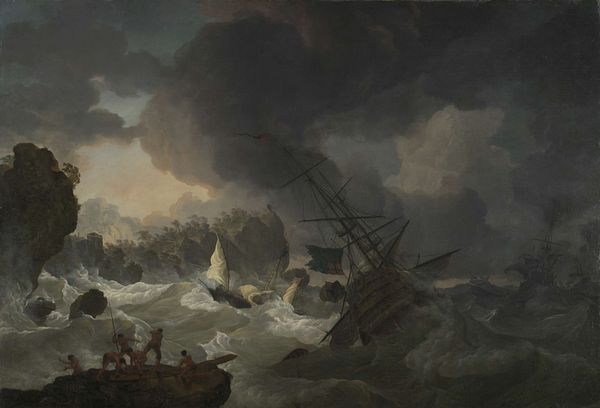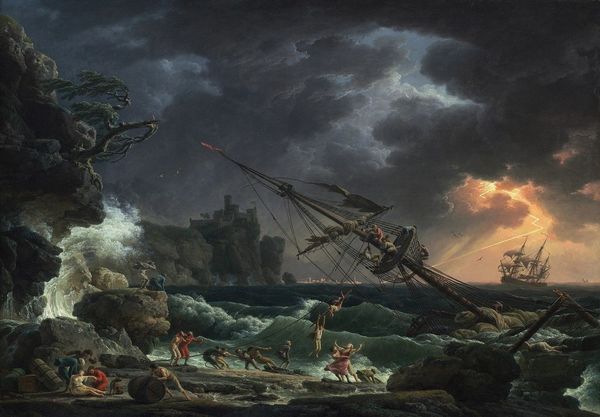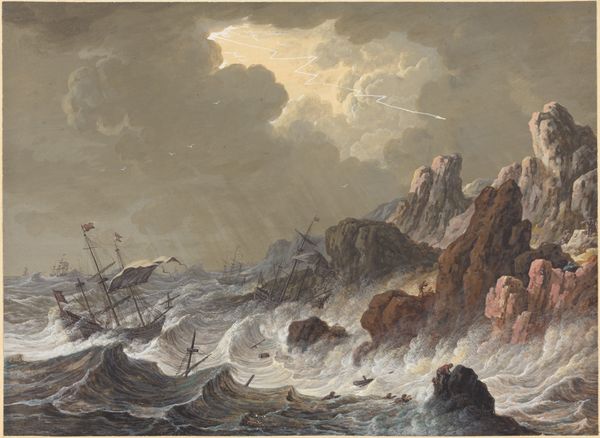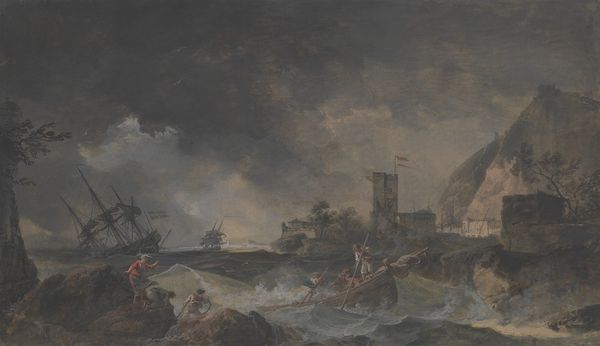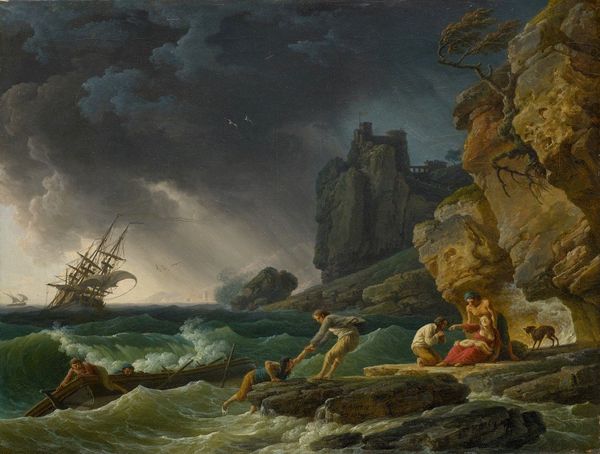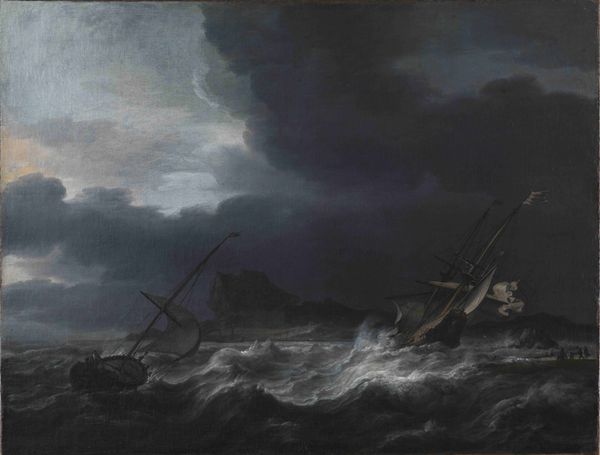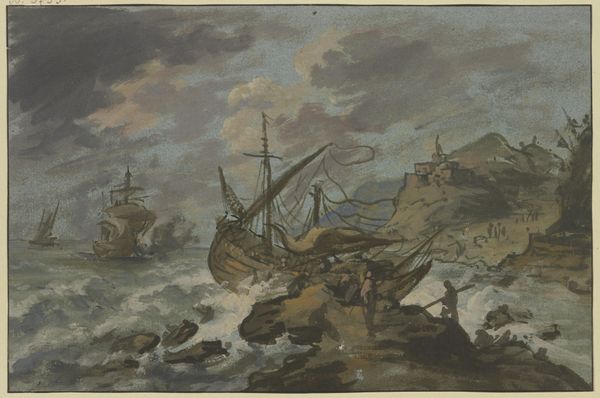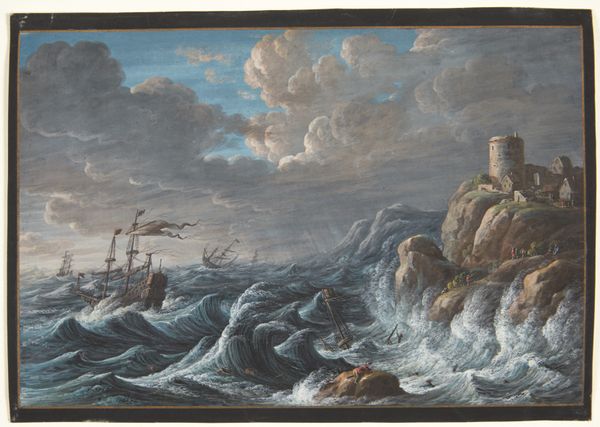
Dimensions: 42.5 cm (height) x 59.5 cm (width) (Netto)
Editor: Here we have Claude-Joseph Vernet's *A Shipwreck*, painted sometime between 1729 and 1789. It's an oil painting on wood, currently hanging in the Statens Museum for Kunst. The scene is so dramatic, with churning waves and a broken ship! What stands out to you most about this piece? Curator: I see a powerful visual statement on the relationship between humanity and nature. Vernet painted shipwrecks often. But it's important to consider where these paintings were displayed. How did the elite of 18th century Europe consume this imagery of disaster and chaos? Editor: So, it’s less about the actual event and more about… how it was perceived by those in power? Curator: Precisely! These weren’t just disaster scenes; they were spectacles of the sublime. These paintings offered a vicarious experience of terror and awe for a comfortable, land-owning class, who were experiencing stability from increased trade on safer ships than ever before. What does it mean that the viewers of these disaster paintings were less at risk of a sea disaster than previous audiences of similar scenes? Editor: It feels a little…exploitative? They get to feel the drama without the actual danger. Did that impact how these paintings were displayed? Curator: Absolutely! They would often be paired with calmer seascapes. This allowed wealthy patrons to exert a kind of visual control over the unruly elements of nature from the safety of their homes. The paintings allowed for a controlled interaction with concepts of mortality. It reflects a very specific social dynamic. Editor: Wow, I hadn't thought about it that way. It completely reframes the image. I’m no longer seeing it as simply a disaster, but a reflection of a complex power dynamic.
Comments
No comments
Be the first to comment and join the conversation on the ultimate creative platform.

